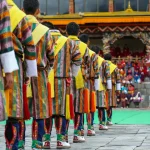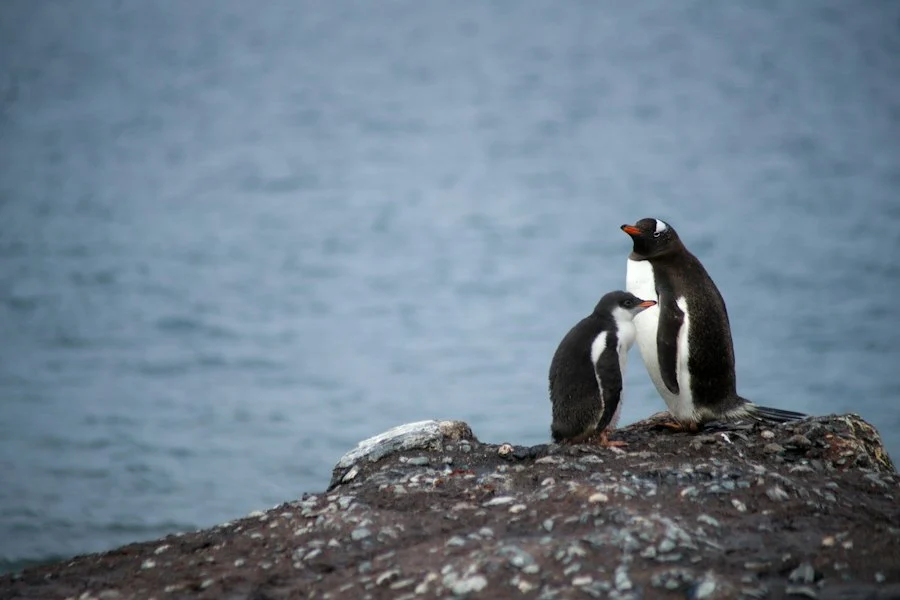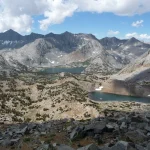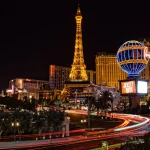
The Icy Battle for Antarctica: A Look at the Various International Claims

The history of international claims in Antarctica dates back to the early 19th century when explorers from different nations began to set foot on the continent. The first recorded landing on Antarctica was made by the American sealer John Davis in 1821. Over the next few decades, expeditions from Britain, France, Russia, and other countries followed suit.
In 1908, Britain made the first formal claim to a portion of Antarctica known as the British Antarctic Territory. This claim was based on the discovery of new land by British explorer Ernest Shackleton during his Nimrod Expedition. Other countries soon followed suit, with Norway claiming the territory of Queen Maud Land in 1939 and Australia claiming the Australian Antarctic Territory in 1933.
The issue of international claims in Antarctica came to a head during the International Geophysical Year (IGY) in 1957-1958. During this period, 12 countries conducted extensive scientific research in Antarctica, leading to increased interest and competition for control over the continent. In response to these developments, the Antarctic Treaty was signed in 1959, effectively putting a freeze on territorial claims and establishing Antarctica as a scientific preserve.
Current Status of International Claims in Antarctica
Currently, there are seven countries that have made territorial claims in Antarctica: Argentina, Australia, Chile, France, New Zealand, Norway, and the United Kingdom. These claims overlap in some areas, leading to territorial disputes. However, under the Antarctic Treaty System, all territorial claims are held in abeyance and no new claims can be made.
The Antarctic Treaty System has been successful in preventing conflicts over territorial claims in Antarctica. It has created a framework for cooperation and collaboration among nations, with a focus on scientific research and environmental protection. The treaty also prohibits any military activity on the continent, ensuring that Antarctica remains a peaceful and demilitarized zone.
Despite the lack of formal territorial claims, there is still ongoing competition for influence and control over Antarctica. Countries are vying for a seat at the table when it comes to decision-making and resource exploitation in the region. This competition is fueled by the potential economic opportunities that Antarctica presents, including oil and gas reserves, mineral deposits, and fishing grounds.
Antarctica’s Importance in Scientific Research
Antarctica is often referred to as a living laboratory for scientific research. Its unique environment provides scientists with unparalleled opportunities to study a wide range of disciplines, including climate change, geology, biology, and astronomy.
One of the most significant areas of research conducted in Antarctica is climate change. The continent is experiencing some of the most rapid warming on Earth, with temperatures rising at a rate three times faster than the global average. Scientists study the melting ice sheets, changing ocean currents, and shifting ecosystems to better understand the impacts of climate change and develop strategies for mitigation and adaptation.
Antarctica is also a treasure trove for geologists. The continent’s ice sheets preserve a record of Earth’s climate history, dating back millions of years. By studying ice cores, scientists can reconstruct past climate conditions and gain insights into future climate trends. Antarctica is also home to unique geological features, such as active volcanoes and subglacial lakes, which provide valuable insights into Earth’s geodynamic processes.
In addition to climate and geology, Antarctica is a hotspot for biological research. Despite its harsh conditions, the continent is home to a surprising diversity of life, including penguins, seals, whales, and a variety of microorganisms. Scientists study these organisms to understand how they have adapted to extreme environments and to search for new drugs and biotechnological applications.
Travel Deals to Antarctica: How to Get There
| Category | Metric |
|---|---|
| Climate Change | Antarctica holds 90% of the world’s ice and is a key indicator of global climate change. |
| Atmospheric Research | Antarctica’s remote location and unique atmospheric conditions make it an ideal location for studying the Earth’s atmosphere. |
| Geology | Antarctica’s geological history provides valuable insights into the Earth’s past and helps scientists understand the formation of the continents. |
| Biodiversity | Antarctica is home to a unique ecosystem of plants and animals that are adapted to extreme cold and darkness, providing valuable insights into the limits of life on Earth. |
| Astronomy | Antarctica’s clear skies and lack of light pollution make it an ideal location for observing the stars and studying the universe. |
Traveling to Antarctica is no easy feat. The continent is located thousands of miles away from major population centers and is accessible only by sea or air. There are several options available for travelers who wish to visit Antarctica, each with its own advantages and costs.
The most common way to reach Antarctica is by taking a cruise ship from South America. Several companies offer cruises that depart from ports in Argentina or Chile and sail across the Drake Passage to the Antarctic Peninsula. These cruises typically last between 10 and 20 days and offer passengers the opportunity to explore the continent’s stunning landscapes and wildlife.
Another option for reaching Antarctica is by taking a flight from Punta Arenas in Chile to King George Island, which is located near the northern tip of the Antarctic Peninsula. From there, travelers can join a guided tour or expedition to explore the surrounding areas. This option is more expensive than a cruise but allows for a shorter travel time and more time on the continent.
For those who prefer a more adventurous journey, it is also possible to sail to Antarctica on a private yacht or sailboat. This option requires more planning and preparation but offers a unique and intimate experience of the continent. It is important to note that private yachts are subject to strict regulations and must obtain permits from the relevant authorities before entering Antarctic waters.
Vacation Packages to Antarctica: What to Expect
Once you have decided on how to get to Antarctica, the next step is to choose a vacation package that suits your interests and budget. There are several options available, ranging from budget-friendly expeditions to luxury cruises.
Budget travelers can opt for an expedition-style cruise, which offers basic accommodations and meals onboard a small ship. These cruises focus on exploring the wildlife and landscapes of Antarctica and typically include activities such as zodiac cruises, shore landings, and wildlife spotting. While the accommodations may be simple, the experience of being in Antarctica is priceless.
For those who prefer a more comfortable experience, there are mid-range cruises available that offer more spacious cabins and amenities. These cruises often include additional activities such as kayaking, hiking, and photography workshops. They also provide more flexibility in terms of itinerary and allow for longer stays in certain locations.
Luxury travelers can choose from a range of high-end cruises that offer luxurious accommodations, gourmet dining, and personalized service. These cruises often feature onboard experts who provide lectures and presentations on various topics related to Antarctica. They also offer exclusive experiences such as helicopter tours, hot air balloon rides, and even overnight camping on the continent.
Adventure Tourism in Antarctica: Activities and Excursions

Antarctica is a paradise for adventure enthusiasts. The continent offers a wide range of activities and excursions that allow visitors to explore its stunning landscapes and wildlife up close.
One of the most popular activities in Antarctica is kayaking. Kayaking allows visitors to navigate through icebergs and get close to wildlife such as penguins, seals, and whales. It is a unique and immersive way to experience the beauty and tranquility of Antarctica.
Another popular activity is hiking. Antarctica offers a variety of hiking trails that take visitors through breathtaking landscapes, including snow-covered mountains, ice fields, and frozen lakes. Hiking in Antarctica requires a moderate level of fitness and proper equipment, but the rewards are well worth the effort.
For those who are looking for a more adrenaline-pumping experience, there are opportunities for ice climbing and mountaineering in Antarctica. These activities require specialized skills and equipment, but they offer a once-in-a-lifetime opportunity to conquer some of the most remote and challenging peaks on Earth.
In addition to these activities, visitors to Antarctica can also enjoy wildlife watching, photography, and even scuba diving. The continent is home to a wide variety of marine life, including seals, whales, and countless species of fish. Scuba diving in Antarctica is a truly unique experience that allows divers to explore the underwater world beneath the ice.
Luxury Travel to Antarctica: Exclusive Experiences
For those who prefer a more exclusive and luxurious experience, there are several options available for luxury travel to Antarctica. These packages offer unparalleled comfort, personalized service, and exclusive experiences that are not available on regular cruises.
Luxury cruises to Antarctica often feature spacious suites with private balconies, gourmet dining options, and onboard spas and wellness centers. They also offer a range of exclusive activities such as helicopter tours, hot air balloon rides, and even overnight camping on the continent. These cruises typically have a smaller passenger capacity, allowing for a more intimate and personalized experience.
In addition to luxury cruises, there are also private jet tours available that allow travelers to reach Antarctica in style and comfort. These tours offer the convenience of private air travel and the flexibility to customize the itinerary according to personal preferences. They often include stays at luxury lodges and campsites, as well as exclusive activities such as wildlife encounters and cultural experiences.
For those who prefer a more independent and flexible experience, it is also possible to charter a private yacht or sailboat to explore Antarctica. This option allows for complete freedom and privacy, with the ability to design a personalized itinerary and choose the activities and excursions that suit your interests. It is important to note that chartering a private yacht in Antarctica requires careful planning and coordination with local authorities.
Budget Travel Tips for Antarctica: How to Save Money
Traveling to Antarctica can be an expensive endeavor, but there are several ways to save money and make the most of your trip on a budget.
One of the most effective ways to save money is by booking your trip well in advance. Many tour operators offer early bird discounts or special promotions for early bookings. By planning ahead, you can take advantage of these offers and secure the best deals.
Another way to save money is by choosing a budget-friendly cruise or expedition. These cruises offer basic accommodations and meals but still provide an immersive experience of Antarctica. While the amenities may be more modest, the focus is on exploring the wildlife and landscapes of the continent.
If you are flexible with your travel dates, you can also take advantage of last-minute deals. Tour operators often offer discounted rates for trips that have not been fully booked or for departures that are approaching quickly. By keeping an eye on these deals, you may be able to snag a great bargain.
Finally, it is important to pack wisely and bring all the necessary gear and equipment with you. Antarctica’s extreme conditions require specialized clothing and equipment, which can be expensive to rent or purchase on the continent. By bringing your own gear, you can save money and ensure that you are properly prepared for the trip.
The Future of Antarctica’s International Claims and Tourism Industry
The battle for Antarctica is far from over. As climate change continues to reshape the continent and its surrounding waters, the stakes are higher than ever. The melting ice sheets and changing ecosystems are opening up new opportunities for resource exploitation and economic development. At the same time, they are also posing new challenges for environmental protection and sustainability.
The future of Antarctica’s international claims will depend on a delicate balance between economic interests, scientific research, and environmental stewardship. The Antarctic Treaty System has been successful in preventing conflicts over territorial claims and promoting cooperation among nations. However, as the pressure to exploit Antarctica’s resources increases, there is a need for stronger regulations and enforcement mechanisms to ensure the long-term sustainability of the continent.
The tourism industry in Antarctica is also facing its own set of challenges. While tourism provides an important source of income for local communities and contributes to scientific research, it also poses risks to the fragile ecosystem of the continent. The increasing number of visitors and the associated infrastructure development can have negative impacts on wildlife, habitats, and cultural heritage sites.
To ensure the future sustainability of tourism in Antarctica, it is important to implement strict regulations and guidelines for visitor activities. This includes limiting the number of visitors, controlling access to sensitive areas, and promoting responsible tourism practices. It is also crucial to invest in research and monitoring programs to better understand the impacts of tourism on Antarctica’s environment and develop strategies for mitigation and adaptation.
In conclusion, Antarctica is a unique and precious place that requires careful management and stewardship. The battle for control over this pristine environment is not only about political power but also about economic opportunities and environmental sustainability. By working together and taking a long-term perspective, we can ensure that Antarctica remains a symbol of peace, cooperation, and scientific discovery for generations to come.
If you’re fascinated by the icy landscapes of Antarctica and the various international claims surrounding it, you might also be interested in exploring the wonders of Sweden. From its stunning natural beauty to its rich cultural heritage, Sweden offers a unique travel experience. Discover more about this Scandinavian gem in the article “Exploring Wonders: Sweden” on Destination Mate’s website.
FAQs
What is Antarctica?
Antarctica is the southernmost continent on Earth, located almost entirely within the Antarctic Circle. It is the fifth largest continent and has no permanent human population.
What are the various international claims on Antarctica?
There are seven countries that claim territory in Antarctica: Argentina, Australia, Chile, France, New Zealand, Norway, and the United Kingdom. However, these claims are not recognized by other countries and are subject to the Antarctic Treaty System.
What is the Antarctic Treaty System?
The Antarctic Treaty System is a set of international agreements that regulate Antarctica and its surrounding waters. It was signed in 1959 by 12 countries and has since been ratified by 54 countries. The treaty prohibits military activity, nuclear explosions, and mineral mining in Antarctica.
What is the status of Antarctica under international law?
Antarctica is not owned by any country and is considered a global commons. The continent is governed by the Antarctic Treaty System, which ensures that it is used for peaceful purposes and scientific research.
What is the significance of Antarctica?
Antarctica is a unique and important ecosystem that is home to a wide variety of wildlife, including penguins, seals, and whales. It also plays a crucial role in regulating the Earth’s climate and ocean currents. Additionally, Antarctica is a valuable source of scientific research, particularly in the fields of climate change and astronomy.
Recent Posts


Exploring the Majestic Canadian Rockies: A Journey with Canadian Rocky Mountain Tours
